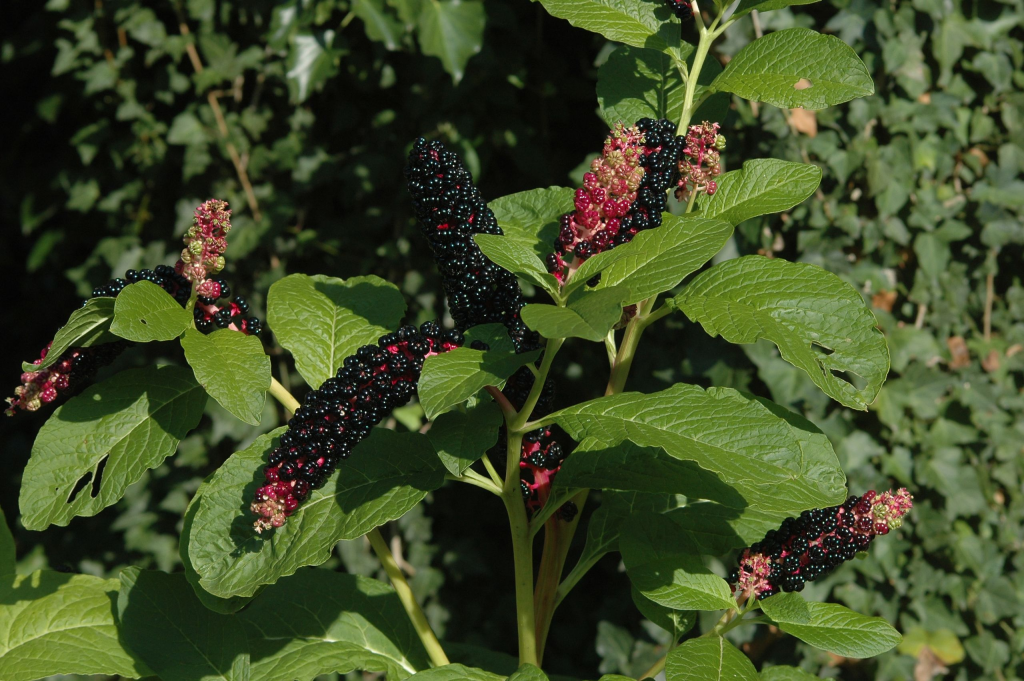Synonyms
The name “Pokeweed” first appeared in “Ben Jing”. It is also known as “Xian Lu” (Yijing), “Zhu Tang”, “Ma Wei” (Erya), “Chang Liao” (Guangya), “Liu”, “Zhang Liu” (Yupian), and so on.
Morphology
It is a perennial herbaceous plant, reaching heights of about 70 to 150 centimeters, and is hairless. The roots are stout, fleshy, conical, with a pale yellow outer skin. The stem is erect, green, or purplish-red. The leaves are alternate, elliptic or ovate-elliptic, 12 to 25 centimeters long and 5 to 10 centimeters wide. The racemes are terminal or lateral, 10 to 20 centimeters long; the flowers are hermaphroditic, with a diameter of about 8 millimeters. The berries are flattened-globular, purple-black, usually consisting of eight carpels.
The shape of the rootstock of pokeweed is similar to that of ginseng, so there are often cases of mistaking pokeweed for ginseng or American ginseng, leading to poisoning incidents.


